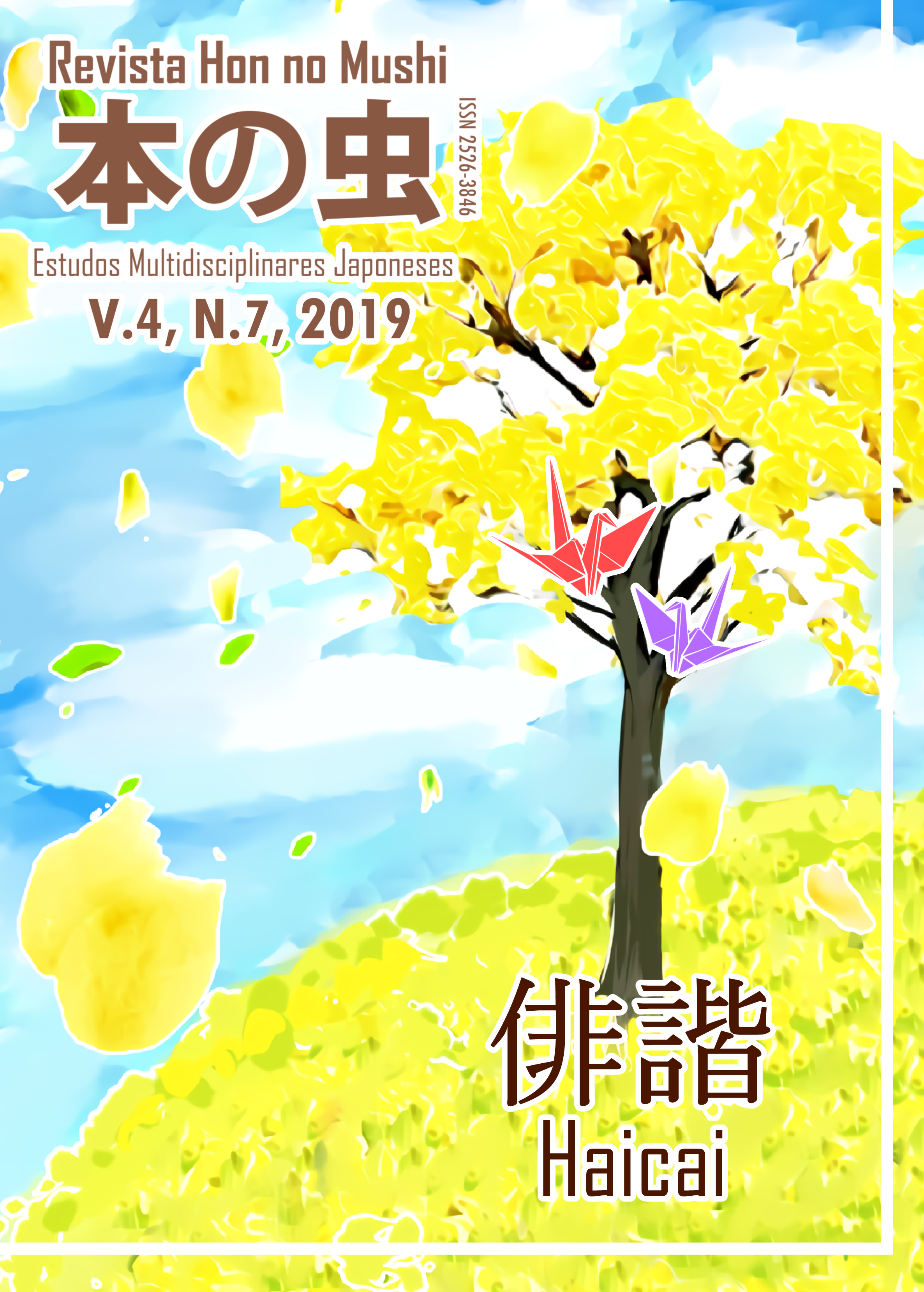CONCRETE "HAGOROMO": POEM PLAY
Keywords:
concrete poetry; Haroldo de Campos; noh theatre; transcreation; Zeami.Abstract
Taking in consideration the ancient relation between the Japanese poetic art and the visual arts represented by painting and calligraphy, as well as the relative modernity of this use in ocidental art with the concretist movement, I analyze in the present article the application exerted by Haroldo de Campos of spacing, diagramming, and other methods of concrete poetry, as to their meaning in his transcreation of the noh play Hagoromo, by Zeami. Campos, making use of his own experience as a poet, resorted to the above-mentioned methods as compensation for the poetic effects present in the original’s calligraphy and ideographic writing; specifically, he lined up the aesthetic information of spacing with calligraphy, as well as the poetic concentrations for the translation of ideograms. I use as references the theory of Campos himself, and also writings from Darci Kusano, Paulo Warth Gick and Shuichi Kato, to point the similarity of these visual strategies and their cultural importance.
Downloads
References
CAMPOS, Haroldo de. O charme sutil de Hagoromo. In: ZEAMI. Hagoromo de Zeami – O charme sutil. São Paulo: Estação Liberdade, 2006, p. 13-27.
CAMPOS, Haroldo de. Da tradução como criação e como crítica. In: CAMPOS, Haroldo de. Metalinguagem & Outras Metas. São Paulo: Perspectiva, 2006, p. 31-48.
KUSANO, Darci. O que é teatro Nô. São Paulo: Brasiliense, 1988.
GICK, Paulo Warth. Panorama da literatura japonesa. In: SAWAKO, Ariyoshi. et al. O Canto da Terra. Porto Alegre: Movimento, 1994, p. 7-21.
KATO, Shuichi. Tempo e Espaço na Cultura Japonesa. São Paulo: Estação Liberdade, 2012.
Downloads
Published
Issue
Section
License
The copyright belongs to the Hon Journal in Mishi - Multidisciplinary Japanese Studies and to the authors of each article. All work or part of it, when quoted or used, must be referenced.




